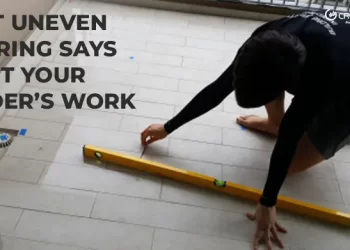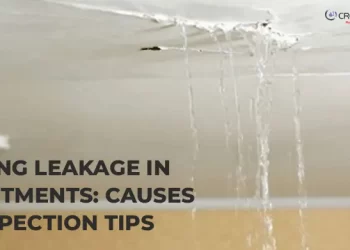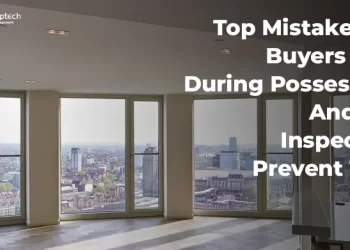When buying or renting a flat in India, one of the most common yet overlooked issues is hidden dampness. While freshly painted walls and polished finishes can look perfect, moisture problems often remain concealed until they cause visible damage — such as peeling paint, mold growth, or structural weakening. This is where moisture meters become indispensable in a professional home inspection. These tools help inspectors identify dampness early, even when it’s not visible, ensuring you make a safe and informed property decision.
Early Detection of Hidden Dampness
A moisture meter is designed to measure the amount of moisture present in walls, ceilings, and floors. Since water seepage can often spread internally before showing surface-level signs, these tools give inspectors a clear picture of the property’s actual health.
- Behind Fresh Paint: Builders often repaint walls before selling to hide water damage. A moisture meter can detect dampness beneath the surface.
- Ceilings and Corners: Dampness usually begins in less noticeable spots like ceiling corners or behind wardrobes easily caught with a meter.
- Wooden Flooring and Furniture: Prolonged exposure to hidden dampness can weaken wood, causing warping or termite infestation.
Why Dampness Shouldn’t Be Ignored
Unchecked dampness is not just a cosmetic issue it can become a serious financial and health concern:
- Structural Damage: Continuous seepage weakens walls, plaster, and sometimes even load-bearing structures.
- Mold and Health Risks: Damp areas promote mold growth, leading to respiratory issues and allergies.
- Electrical Hazards: Moisture near wiring can cause short circuits, increasing the risk of fire.
- Lower Property Value: A home with visible dampness loses its market appeal and resale potential.
How Inspectors Use Moisture Meters
During a flat inspection, certified inspectors use both pin-type and pinless moisture meters depending on the area being tested.
- Pin-type meters: Inserted into surfaces to measure exact moisture content. Ideal for walls and wood.
- Pinless meters: Used to scan large surfaces quickly without causing damage to the finish.
- Cross-verification: Moisture readings are compared across different areas to identify leakage sources.
These readings are documented in the inspection report, giving buyers or tenants a factual basis for negotiation or repair requests.
Preventing Moisture Problems in Flats
While detection is critical, prevention can save you from recurring problems:
- Ensure proper waterproofing during construction.
- Regularly inspect plumbing lines for leaks.
- Check terrace and bathroom tiling for cracks that allow seepage.
- Maintain proper ventilation to reduce condensation indoors.
Conclusion
A moisture meter may seem like a small device, but in the hands of a trained home inspector, it can protect you from massive financial and health risks. By detecting dampness before it becomes visible, you can save on costly repairs, ensure a structurally sound property, and negotiate with confidence. Whether you’re buying, renting, or selling a flat, a professional inspection with moisture testing is a must for complete peace of mind.
FAQs
- Can’t I just see dampness with my eyes instead of using a moisture meter?
Not always. Many damp patches are hidden beneath paint or tiles, making them invisible without tools. - Are moisture meters safe to use on finished walls?
Yes. Pinless meters don’t damage walls, while pin-type devices leave only tiny marks if needed. - Do new flats also require dampness checks?
Absolutely. Even brand-new homes can have poor waterproofing or plumbing leaks. - How long does a moisture inspection take?
Usually 20–30 minutes as part of the complete home inspection process. - Can moisture meter reports help in negotiations?
Yes. Documented dampness findings allow you to ask for repairs or price adjustments.








